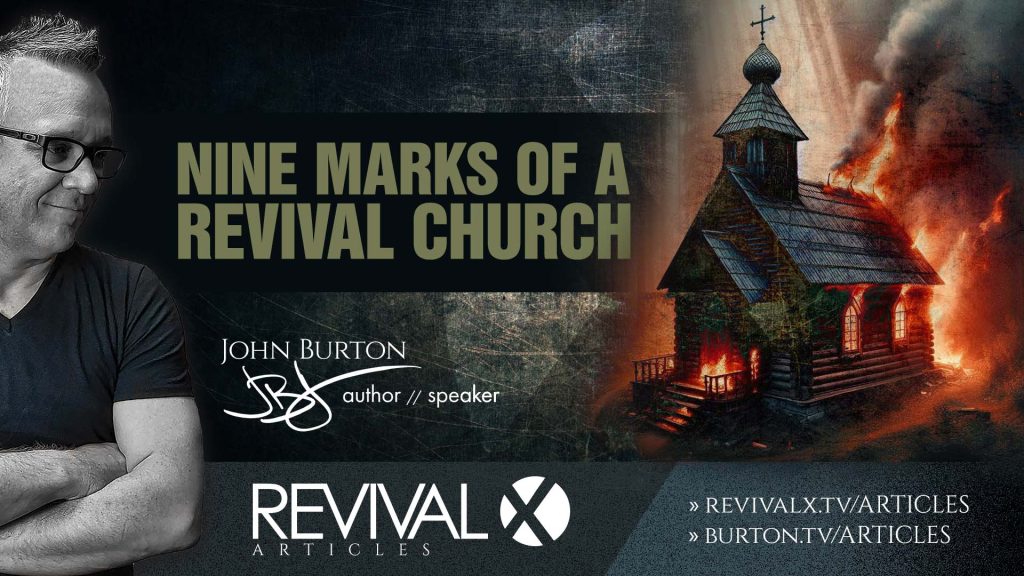Marks of a Revival-Minded Church
Spirit-filled churches are increasingly falling into the trap of becoming a “typical church.”
I've given leadership to revival-style churches and ministries for decades. It's grieving how few Spirit-filled churches are truly taking people unapologetically into the depths of surrender to Jesus. Instead, the preference is to grow wide and shallow in the hopes that the seats stay full, the money keeps coming in and the programs are staffed.
Of course, the majority of churches, Charismatic included, aren't pretending to be concerned about revival at all. The pursuit of a wild-fire, other-worldly, supernatural habitation of the Spirit of God never even comes to mind.
The cost is too high. The chances are too slim.
To most, it's not worth it.
The truth is, revival churches don't see dramatic impact, big crowds and overwhelming wonders in the early stages. The wells of revival must be dug. The hours of prayer must be invested. Repentance, consecration and a radical devotion of time must be constant. Few are willing to buy in at this level, and pastors know it.
The preferred church growth method is to create a “healthy, vibrant” atmosphere that's focused on meeting needs and fulfilling expectations. The shock and awe of God's glory is traded for a more naturally familiar environment that's sprinkled with some worship, teaching and fellowship. Nothing too deep, expensive or disruptive.
Of course, not every church has descended into what I'm calling a typical church. And, not every church will have done so on every point. Some are hanging strong in some areas while slipping on others.
And, it should also be said that legitimate revival churches can fail on some points that typical churches are stronger in. However, I do believe the comparison is generally valid.
Nine key differences between typical churches and revival churches:
- Typical Church: Participation is emphasized
Revival Church: Consecration is emphasized
In a revival church, the focus is a radical surrender to Jesus and an ongoing depth to the lives of all who come. Simple church attendance does little to advance the vision of dramatic, supernatural, regional impact. A revival-style church would be happier with 50 people going deep in the Holy Spirit than 500 attending, giving and serving.
- Typical Church: Prayer is rare
Revival Church: Prayer is constant
Prayer is the primary call of all in a revival church. A powerful, miraculous, supernatural culture of fiery intercession burns nonstop. No authentic revival has been initiated without first developing a foundation of unceasing and effective prayer. Without the intensity of intercession, revival churches cannot exist.
- Typical Church: Church growth is the goal
Revival Church: Regional revival is the goal
Revival church leaders don’t care in the least about the numerical growth of their church or ministry. Their eyes are on the city. They do want the right people in position to contend for revival in the city. They do pray in the laborers. However, they understand the Gideon principle. Fewer devoted people keenly focused on revival is powerfully effective.
- Typical Church: Relationships are a key focus
Revival Church: Relationships are a byproduct
Deep, powerful and biblical relationshps are developed in the foxhole at revival-style churches. The mission is the main thing. An outpouring of the Holy Spirit in a context of holiness and intercession is the prime goal. Relationships result as hungry, consecrated people put differences aside and contend for revival with military precision.
- Typical Church: Demons remain hidden
Revival Church: Demons are exposed
Playing games with very powerful, wicked demonic spirits is not an option in a revival church. At risk of offending those in attendance, prophetic and apostolic leaders will discern haunting, taunting spirits and expel them. They train the body to do the same and wouldn’t think of hiding the dramatic moments of freedom from others in the service.
- Typical Church: Encouragement driven
Revival Church: Prophetically driven
Churches that are authentically prophetic will at times cut, offend, correct and challenge. Those who respond will ultimately experience extreme encouragement as they blow through limitations and compromise. Revival churches are equipping an army. End-time holy soldiers must go through radical transformation in order to be made truly ready.
- Typical Church: Driven by expectations
Revival Church: Establishes expectations
Revival churches get their vision and strategy from the prayer room. They refuse to buy into the “tried and true” methods of building a church. Many will be turned off by revival churches as their demands go unmet. The rest will come alive and burn hot.
- Typical Church: One-stop shop
Revival Church: Specialized ministry
As it’s been said, Christians aren’t in gangs. It’s okay to connect in different churches. Revival leaders most often encourage people to draw from other churches and ministries. This allows them to remain focused on their specific part of the city-wide vision. Revival leaders make no apology about being laser-focused and allowing other needs to be met by other leaders in the city.
- Typical Church: A family gathering
Revival Church: A school of fire
Those in revival churches find themselves groaning in intercession, crying out to God, repenting with passion and getting baptized in holy fire most every day. Dreams, visions, encounters, assignments, warnings and preparing for the end-times define the experience. MASH units, instead of hospitals, get people healed and equipped to run to the battle and annihilate the enemy.

